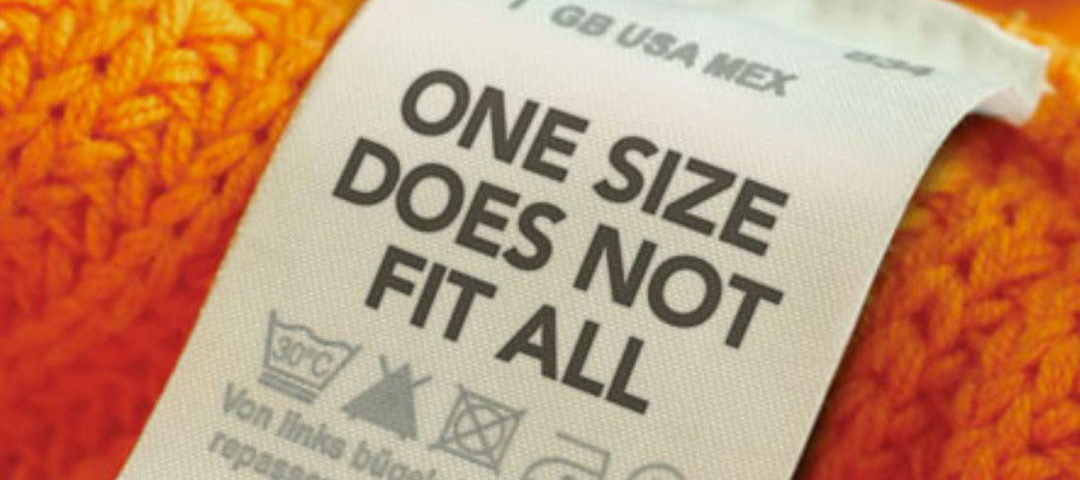Get a Flexible Benefits Plan That ‘Fits’ Every Employee
The other day, I saw this on my son's baseball cap: one-size fits all. Really? How can one hat fit every child’s head from the age of 6-14? Then, I came across another label in another hat: "one size fits most, but not all". What a breath of fresh air; it was honest. The same can be said about a benefits plan. One group benefits plan does not always meet the needs of each and every employee.
Why One Size Doesn’t Quite Fit for Employee Benefits
Whether an employer has 5 or 500 employees, the organization will comprise a wide range of demographics. For instance, an employer could have baby boomers (age 55+), generation X (age 40+), generation Y (age 30+) and millennials, all working side by side.
Each employee also has unique needs. Some employees are single and have no dependents while some are married or have partners with coverage. Some employees are single parents and others have multiple children from different relationships. Some employees are very healthy and choose to spend their healthcare dollars on preventative medicine such as physiotherapy and acupuncture, while others require prescription medication to help manage a chronic illness.
Ultimately, a 26 year-old employee who has just graduated from college will want different coverage than a 46 year-old employee with three kids. So, how can one single benefit plan appeal to each employee? It’s very difficult.
New Flex Plan Meets Individual Employee Benefits Needs
We know from the Sanofi Aventis survey how much employees value their benefits program. But wouldn’t it make more sense to offer employees some choice in the benefits which are relevant and meaningful to them? Yup. Presenting, flex plans.
Flex plans have been around in Canada for approximately 25 years but were typically only offered to the largest employers because of their perceived complexity and administrative requirements. Today, technology has simplified processes and clients of any size (right to down 5 employees) can implement a flex plan to give their employees greater choice.
Comparing a Traditional Benefits Plan to a Flex Plan
With a traditional "one size fits" benefits program, the employer chooses a benefits package that would 1 – fit within their budget and 2 – attract and retain talent. An example might be: $25,000 of life insurance and long-term disability coverage, 80% pay direct drug coverage, $300 or $500 paramedical practitioners, $200 vision care in 24 months, 80% basic dental, 50% major dental to a combined maximum of $1,500. Many employers share the premium costs with their employees, paying 50% of the total plan cost.
Employees claim benefits throughout the year and at the end of the year, the insurer looks at the claims versus premiums ratio and reconciles the account. If the group has claimed more than 80% of their total premium, costs go upon renewing the plan. As the costs rise, the employer often makes changes to the plan, which can result in delivering less value to the employees. If employees begin paying more for the same or sometimes less coverage, the benefits plan will lose its perceived value.
However, with a flex program, the employer can deliver a benefits program that appeals to all employees. The employer sets a budget of what they can reasonably afford to spend and creates the plan by choosing the benefits and level of coverage they want to offer. There are three levels of coverage depending on the employer’s budget: Foundation, Select and Premium.
Each employee is assigned a fixed dollar amount and during the enrolment process, the employee can then choose one of three coverage options. Employees use their allocations to make benefit selections from the set of options available. Any leftover funds are automatically transferred to a health care spending account. Any overages are deducted from their pay.
Why Flex Plans Might Be Better For Your Business
Unlike traditional programs, the flex program is pooled with other organizations, and rates are a guaranteed for two years, both contributing to better rate stability. Every two years, the employer can also re-establish their budget and annual allocations.
Additionally, employers can set a budget on what they can reasonably afford and easily share costs with employees. Employees who want more coverage than what’s offered, can purchase it themselves through easy payroll deductions. In turn, employees have a better understanding and appreciation of how much the employer contributes towards the costs of benefits.
While flex plans may cost a little more initially than a traditional benefits plan, greater rate stability, freedom of benefits choice and increased flexibility often make this plan a viable long-term option. With a flex plan, companies are finally able to try on a benefits plans that fits all of its employees, not just some.
If you’re interested in a flexible benefits plan, contact us.
Ready To Start?
Whether you are with a business, association, or owner operator, we have the solution for your needs.




